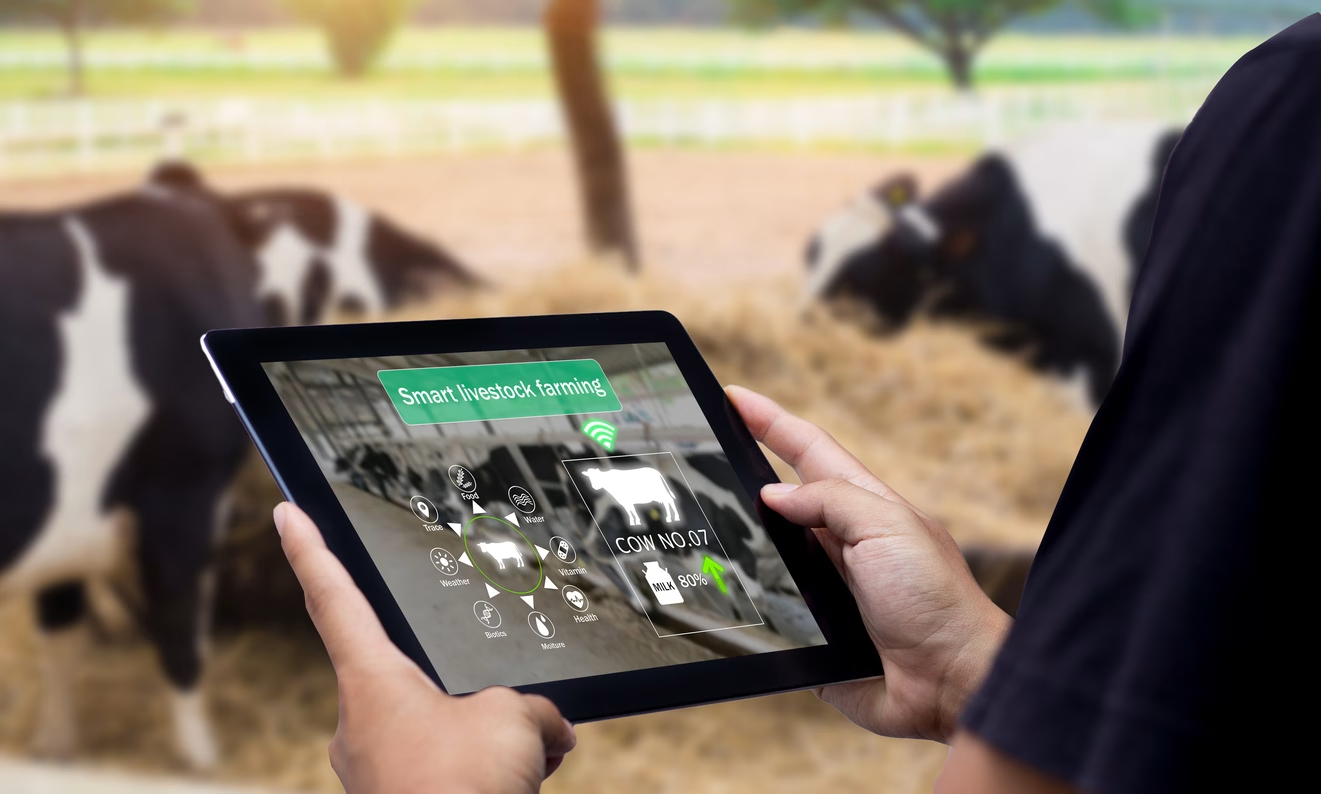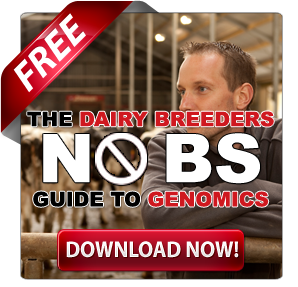Discover ways to boost dairy cattle welfare. How can tech and better housing address locomotion issues in dairy farming?
Summary:
In dairy farming, the evolution of cattle welfare has gained the attention of producers and consumers, with researchers Dr. Dan Weary and Dr. Marina von Keyserlingk from the University of British Columbia leading pivotal studies focused on locomotion and housing improvements for dairy cattle. Their work addresses the persistent challenge of lameness, which affects animal welfare and productivity. This involves innovative detection methods and improved housing environments that align with evolving welfare standards. Dr. Weary notes that combining technology with traditional practices promises precise lameness detection and better living conditions for cattle. Key insights indicate that automated technologies offer consistent detection, enhanced flooring, and outdoor access to mitigate lameness, and aligning housing with cattle preferences balances productivity and welfare. The demand for better animal treatment drives changes in dairy farming, as traditional methods face human error and observation variability challenges. Automation and data analysis offers insights into cow health and new housing methods, such as softer flooring and enhanced comfort. Research at the University emphasizes addressing locomotion and enhancing housing, with automation detecting lameness through motion analysis and sensors. Modern designs focus on natural conditions, reducing stress and injury.
Key Takeaways:
- Technological advancements are pivotal for enhancing lameness detection and cattle mobility data.
- Softer surfaces and outdoor access are crucial for improving dairy cattle comfort and welfare.
- Outdoor access aligns with consumer expectations without compromising dairy productivity.
- Ongoing research in cattle welfare is essential for sustainable dairy farming practices.
- Collaboration between producers and consumers is key to bridging the gap in animal welfare expectations.
- The future of dairy farming focuses on efficiency, improving housing systems, and prioritizing cow comfort.

As people demand better treatment for cows, dairy farmers are pressured to improve their care for these animals, especially regarding their movement and living conditions. These areas are key to making cows healthier and happier, meeting the expectations of modern consumers, and pushing the dairy industry to find better ways to care for animals.
This article examines the difficulties of spotting lameness in cows, how technology is changing cattle welfare, and the importance of good housing design. It also discusses why cows should have access to the outdoors, how to match public views with farm challenges and a plan that puts animal welfare first, promising a better future for dairy farming. Join us as we explore these key areas that affect dairy cattle welfare today.
Navigating Dairy Cattle Welfare: Tradition and Innovation Fusion
In the past, understanding how cows were doing, mainly when they walked and where they lived, depended primarily on people watching them and intervening when necessary.
Challenges of Traditional Dairy Farming Methods
In the past, farmers and vets regularly checked the cows’ health and living conditions. They watched how the cows acted, looked, and walked to identify problems. Regarding housing, the aim was to optimize space and resources to provide cows with sufficient food, water, and comfortable resting areas.
However, these traditional methods presented challenges. People can make mistakes when observing, and their experience and skills differ, leading to varied results. Inspecting cows manually can also be tiring and prone to errors. Also, floors in cowhouses are often made of concrete. While strong, concrete can make it hard for cows, leading to leg problems and discomfort. This affects a cow’s health and milk production.
The Need for Innovation
Technological advancements such as automation and data analysis have the potential to revolutionize cow care. Tools like sensors can provide continuous, accurate monitoring of cows, offering valuable insights into their health. Moreover, new methods in cow housing, like using softer flooring or providing access to open pastures, can enhance cow comfort and meet consumer preferences. This technological revolution offers a promising future for dairy farming, where cattle welfare is significantly improved.
Contributions of Key Researchers
Dr. Dan Weary and Dr. Marina (Nina) von Keyserlingk have been pivotal in advancing dairy cattle care through their research at the University of British Columbia. Their scholarly contributions have highlighted the necessity of addressing locomotion issues and enhancing dairy cow housing environments. They have been instrumental in integrating technological advancements to transform traditional cow welfare practices, leading to innovative solutions like automation in lameness detection. Their extensive body of work continually reshapes prevailing perspectives on dairy farming, setting new standards in the industry for both animal welfare and productivity.
Revolutionizing Lameness Detection in Dairy Cattle with Technology
Detecting lameness in dairy cattle has long been a critical challenge for farmers and professionals who depend on early identification to maintain animal welfare and farm productivity. Traditionally, this process relies heavily on human observation, which demands significant time and expertise and suffers from inherent variability and subjectivity. Observers may differ in their assessments of a cow’s gait, leading to inconsistent detection rates and a potential delay in addressing lameness, affecting the animals’ health and performance. As a result, inaccurate detection can have profound repercussions, leading to increased medical costs, decreased milk yield, and animal suffering.
In this light, the importance of reliable lameness detection cannot be overstated. It’s about more than just pinpointing discomfort; it’s a crucial step toward optimizing the herd’s health management strategies and overall productivity. Automation and technological advancements offer a promising solution, providing Consistent and unbiased data indicating a notable decrease in lameness incidents and improved overall health and productivity of the herd. This change enables producers to make well-informed decisions. It ensures that intervention strategies can be tailored to individual cows, significantly enhancing welfare outcomes and operational efficiency. As the industry moves towards integrating these innovations, the potential to elevate standards of care while simultaneously boosting productivity marks a pivotal transformation in dairy farming practice.
Finding lameness, or limping, in dairy cows has been challenging for farmers. They must spot it early to keep cows healthy and farms running smoothly. Usually, this depends on people watching the cows walk, which takes time and skill. But people see things differently. They might disagree on whether a cow is limping, which can cause delays in helping the cow. This can make the cow’s health worse, cost more in vet bills, reduce milk production, and cause the cow to suffer.
So, finding reliable ways to see if a cow is limping is essential. It’s not just about knowing the cow is in pain; it’s about keeping the whole herd healthy and productive. Technology helps by providing consistent and accurate data. This data shows changes in how cows move over time. This helps farmers make better choices and take action for each cow’s needs. This makes cows healthier and happier and makes farms work better. As farms use these new tools, they’re changing how they care for cows and improving how much milk they produce.
Harnessing Digital Eyes: Pioneering the Future of Dairy Herd Health
One of the most significant changes in finding lameness in dairy cattle is automated technology. This shift has transformed the industry. In the past, people relied on what they could see, but now, we use high-tech solutions that are more objective and reliable.
Automatic lameness detection uses tools like motion analysis systems. These systems have sensors and cameras to capture real-time data. They study how each cow walks to spot changes that could signal lameness. With machine learning, these devices are getting better at telling normal from abnormal walking, giving a consistent way to assess lameness.
A significant advancement involves continuously collecting data. Farmers can get steady movement data from wearable devices like smart collars or hoof tags thanks to continuous data collection. This helps them find lameness early and track changes over time, allowing quick fixes.
These technological breakthroughs significantly enhance decision-making in dairy farming. With accurate information, dairy farmers can develop targeted plans to address lameness issues, boosting herd health and productivity. Moreover, such technology facilitates data sharing among farms, leading to a better understanding of lameness and developing effective management strategies across the industry. This empowerment through technology is a promising step toward improving dairy cattle welfare.
The impact is enormous: Farmers can now use data-driven insights to manage their cattle proactively and efficiently instead of relying on subjective judgments. As the dairy industry embraces these technological advancements, dairy cattle welfare will improve significantly, aligning business goals with ethical responsibilities.
Transforming Spaces: How Thoughtful Design Elevates Dairy Cattle Welfare
When cows have trouble walking, they can become unhealthy. Lameness is a big problem that can make cows unhappy and less productive. Many dairy farms use concrete floors because they are common, but these floors are tough and can lead to lameness. Cows aren’t made to walk on hard concrete, which can cause stress and pain.
However, softer surfaces like rubber mats can make cows much more comfortable. Rubber mats feel softer like the ground cows might walk on outside. They help reduce stress on cows’ feet and lower the chance of injury. Research shows cows walking on softer flooring have fewer lameness issues and can walk better.
Because of this, how we design dairy cow housing is essential for cow comfort and well-being. Modern housing designs focus on helping cows feel at home by using features that are more like the natural environments they are used to. This helps reduce their stress and keeps them healthier. Planning the layout of these spaces so cows can move quickly and reach everything they need helps improve the herd’s overall health. This approach supports a bigger idea in dairy farming that cares about treating animals well and follows the growing demand for good farming for the environment and animals.
Beyond Barn Walls: The Case for Outdoor Access in Modern Dairy Farming
Outdoor access for dairy cattle has gained significant attention recently due to its numerous advantages. Research shows cows can go outside and behave more naturally, like grazing, which means they are healthier. Outside also lets cows interact and move around, which is hard on indoor concrete floors. These activities help reduce lameness and improve health since moving on softer ground keeps their hooves healthier. [ResearchGate].
Being outdoors also helps cows feel better. The different smells and sights in pastures reduce stress, which is good because stress can hurt their health and milk production. Research shows that letting cows outside doesn’t harm milk production, as some fear. Cows still eat their regular food, and the grass they graze on is a helpful supplement. [Journal of Dairy Science].
Despite these benefits, many dairy producers worry about letting cows outside, mainly due to logistics and productivity. They worry about having enough land, dealing with the weather, and rotating grazing areas. Producers also worry that lousy weather could lower milk production or cause health problems. However, these issues can be managed with good farm planning. Outdoor shelters can protect cows from harsh weather, giving them fresh air and movement without risk. [Frontiers in Veterinary Science].
The evidence supports using pasture-based systems in modern dairy farming. By tackling challenges with innovative solutions, the dairy industry can enhance animal welfare while maintaining productivity and creating sustainable and ethical systems.
Bridging Gaps: Aligning Public Perception with Practical Realities in Dairy Farming
People often have different ideas about how dairy cows should be treated than what farmers can do. Many people want to know that cows are treated well, spend enough time outside, and are kept in places that reduce health problems like lameness because of what they see in the news and hear from animal advocates.
However, farmers must balance these concerns with keeping costs down, maintaining productivity, and dealing with difficulties in changing cow housing or letting them outside. The money challenges and resources needed often don’t match what people expect.
To solve this, we need to try many things:
- Education: Educational programs can benefit both farmers and the public. Farmers should learn about the latest studies and access affordable technology to help them focus on cow welfare. People need accurate information about the challenges of dairy farming to understand what is realistic.
- Transparent Communication: Open communication can build trust between consumers and farmers. Strategies such as farm visits, clear labeling, and interactive online content can help show people what dairy farming is like and how farmers work to improve cow welfare.
- Innovative Practices: New ideas that are cost-effective and good for animals can help. Testing new housing designs or automated lameness detection systems with welfare experts can produce data that improves cow welfare and farm productivity.
Ultimately, balancing consumer hopes and farming realities requires ongoing discussions and genuine efforts from everyone involved. This means making changes that don’t burden the dairy industry while addressing the public’s concerns about animal welfare.
Charting the Future: Embracing a Welfare-First Paradigm in Dairy Farming
Dairy farming is set to change, focusing more on cow welfare. This change happens because consumers want better animal treatment, and research supports improving animal welfare. New technology is leading these changes, offering solutions that could significantly impact the industry.
Technology helps by automating systems that monitor cow health. These systems use sensors and innovative programs to provide real-time information about the cows’ health. This allows farmers to detect early signs of stress or illness, helping to fix problems before they get worse and prevent long-term health issues like lameness. By acting early, farmers can keep their cows healthier and more productive.
Better housing systems are also crucial for the future. These systems try to create natural conditions for cows, giving them more space to move and access to sunlight and fresh air. Cows’ welfare improves when dairy facilities are designed with their natural behaviors in mind. These well-thought-out environments treat animals more humanely and meet public expectations for how animals should be treated.
Research keeps making significant changes in dairy farming. Scientists are looking into different areas, such as using biomarkers to check how healthy dairy cows are in different systems. This way, they learn about the health of the cows in different places. Another critical area is studying housing systems to see how cows behave in pastures instead of being kept inside. This helps find the best living conditions for cows. Also, new health monitoring tools are being developed. These tools use new technologies to give farmers real-time cow movements and health data. All these research efforts aim to make sure that dairy farming is more sustainable and ethically sound in the future.
Ultimately, the evolution of dairy production will entail managing efficiency, productivity, and animal welfare. Farms implementing robotic milking systems that increase efficiency while ensuring high animal welfare standards demonstrate this. By using new technology and understanding better housing systems, we can create dairy farming practices that meet today’s needs and set high standards for the future.
The Bottom Line
The study of dairy cattle welfare involves balancing old methods and new technologies. Research shows that using technology to detect lameness in cows is more precise than traditional methods, which can be inconsistent and subjective. At the same time, changes in dairy cow environments, such as adding softer surfaces and outside access, are essential steps to improve cow comfort and reduce lameness. Nevertheless, challenges persist, such as reconciling consumer preferences with the feasibility of farms.
Therefore, as the dairy industry is about to change, focusing on dairy cattle welfare is the right thing to do and a way to achieve sustainable farming. Using new technologies and rethinking cow housing can significantly improve welfare standards while keeping up productivity.
In the endeavor to enhance cattle welfare within modern dairy farming, stakeholders can look to several innovative strategies that are increasingly becoming critical amidst the ever-evolving agricultural landscape:
- Adoption of Precision Livestock Farming Technology: Utilizing advanced sensor technologies and artificial intelligence can revolutionize farmers’ cattle health and behavior monitoring. Implementing wearable devices for cows can help track their movement and detect signs of distress or illness early, leading to timely interventions and preventing lameness issues. These tools enable farmers to make data-driven decisions that optimize cow comfort and health.
- Implementing Flexible Housing Designs: Barns are designed with flexibility in mind to allow for seasonal adaptations. These can include adjustable curtains for ventilation, rubber flooring to reduce lameness, and ample space for cows to move freely. Such designs cater to changing weather conditions and the cows’ natural preferences for space and comfort, ultimately enhancing their well-being.
- Emphasizing Biophilic Design Elements: Incorporating elements that mimic natural environments, such as natural light, fresh air, and greenery, can significantly improve cattle welfare. Enhancing the living space by allowing more sunlight and fresh air circulation promotes psychological well-being and physical health in dairy cattle.
- Expanding Access to Pasture: Regular outdoor access has been shown to fulfill cows’ natural inclinations to graze and move. Creating rotational grazing schedules ensures sustainable pasture use while offering cows a chance for exercise and natural social interactions, thus reducing stress and improving overall health.
- Collaborative Research and Continuous Education: Engaging with academic institutions and industry experts to keep abreast of the latest research findings can lead to continuous improvement in dairy practices. Hosting workshops and seminars for farmers to exchange ideas and learn about innovative welfare-friendly practices can foster a culture of welfare-first dairy farming.
The dairy industry is at a critical juncture, as it faces mounting pressures to innovate in response to both escalating consumer demands for improved animal welfare and the global need to increase production efficiency. This convergence of factors presents an unprecedented opportunity and challenge for dairy farmers to reevaluate and upgrade their practices by adopting technology-driven solutions and refining housing designs. As consumer awareness grows regarding the ethical treatment of animals, the industry must rapidly adapt, balancing productivity with welfare to maintain its social license to operate and to meet the nutritional needs of a burgeoning global population projected to reach 9.5 billion by 2050. By continuously integrating these innovative practices, the dairy industry can meet consumer expectations and set a new standard for animal welfare globally, ensuring a sustainable future for producers and their herds.
Learn more:
- Lameness in Dairy Cattle: Identifying Risk Factors and Overcoming Barriers to Best Practices
- Transition Cow Facilities: The Golden Investment for Dairy Farm Profitability
- Harnessing Technology, Tools, and Innovative Practices to Empower Dairy Farmers
 Join the Revolution!
Join the Revolution!
Bullvine Daily is your essential e-zine for staying ahead in the dairy industry. With over 30,000 subscribers, we bring you the week’s top news, helping you manage tasks efficiently. Stay informed about milk production, tech adoption, and more, so you can concentrate on your dairy operations.







 Join the Revolution!
Join the Revolution!




